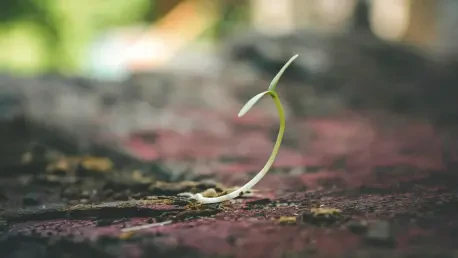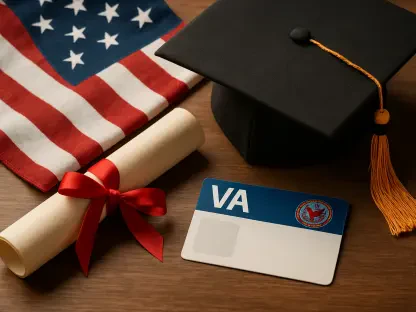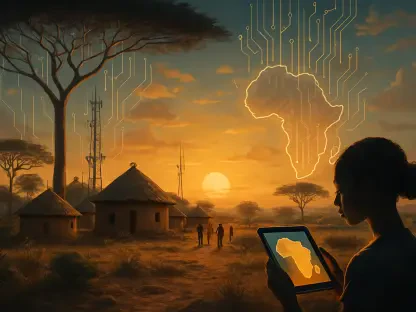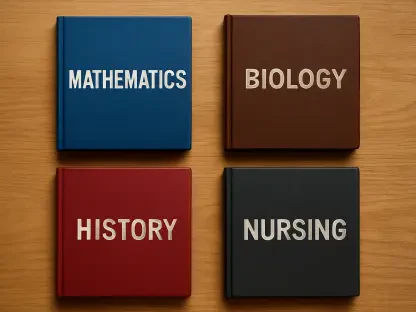Imagine a college inauguration that goes beyond traditional pomp and circumstance, weaving a profound message of sustainability and community into a tangible keepsake. At Luther College, the recent inauguration of President Brad Chamberlain marked a distinctive moment where a simple yet powerful gesture captured the institution’s deepest commitments. During the ceremony at the Center for Faith and Life, attendees received packets of native prairie seeds, a memento crafted through collaboration among faculty, staff, alumni, and local partners. This initiative was not just a commemorative act but a reflection of the college’s dedication to environmental stewardship, collective well-being, and purposeful education. The seeds, carefully chosen and symbolically rich, embody a vision of growth that extends far beyond the campus, inviting recipients to plant roots for a sustainable future. This thoughtful act sets the stage for exploring how such a small item can carry immense meaning, aligning with the college’s mission to inspire lives of impact.
Sowing Seeds of Purpose and Sustainability
The choice of native prairie seeds as an inauguration memento for President Brad Chamberlain speaks volumes about Luther College’s ethos. In his closing remarks during the event, Chamberlain highlighted the metaphor of sowing seeds to inspire and equip students for lives filled with meaning and purpose. This sentiment resonates deeply with the literal act of distributing seeds, as it mirrors the college’s mission to nurture growth in both individuals and communities. Melissa Bills, director of College Ministries and a key member of the inauguration committee, emphasized that these seeds reflect a commitment to sustainability and the flourishing of future generations. The theme of the inauguration, “For the Common Good,” finds a fitting parallel in this gesture, underscoring how individual actions, like planting a seed, contribute to collective progress. The symbolism here is clear: just as seeds take root and grow over time, so too does the college aim to cultivate enduring values in its students and alumni for the betterment of society.
Beyond symbolism, the practical implications of this initiative highlight Luther College’s forward-thinking approach to environmental responsibility. The seeds are not merely tokens but tools for ecological impact, designed to foster biodiversity and support local ecosystems. This choice aligns with the college’s broader goals of integrating sustainable practices into every facet of campus life, from academic programs to community outreach. By distributing native seeds, the college encourages recipients to engage directly with nature, fostering a hands-on connection to environmental stewardship. This act also serves as a reminder of the interconnectedness between human actions and the natural world, a principle that underpins much of Luther’s educational philosophy. The initiative demonstrates how even small gestures can ripple outward, creating awareness and inspiring action on pressing issues like habitat preservation. It’s a tangible step toward ensuring that the college’s values are not just taught in classrooms but lived out in meaningful ways.
Ecological Impact and Enduring Diversity
A critical aspect of the native seed project lies in the deliberate selection of perennial native flowers over short-lived annuals, reflecting both ecological wisdom and symbolic depth. Kirk Larsen, a biology professor and entomologist at Luther College, guided the inauguration committee in choosing a diverse mix of perennials that mirror the diversity within the student body and the lasting influence of alumni. Unlike annual sunflowers, which bloom briefly and fade, perennials return year after year, embodying resilience and continuity. Moreover, these native plants play a vital role in supporting endangered pollinators, such as the rusty patched bumble bee and monarch butterfly, both of which are present on campus. This choice underscores the college’s commitment to environmental stewardship, ensuring that the memento serves a purpose beyond mere commemoration. It’s a living legacy that contributes to the health of local ecosystems while educating recipients about the importance of biodiversity.
The ecological focus of the seed mix also ties into a broader narrative of responsibility that Luther College champions. By prioritizing native species, the project addresses urgent environmental challenges, such as habitat loss and pollinator decline, in a direct and actionable way. Larsen’s expertise ensured that the selected plants would thrive in the region, offering a sustainable solution rather than a temporary display. This decision reflects a nuanced understanding of how educational institutions can lead by example, integrating scientific knowledge into community initiatives. The seeds, therefore, become a bridge between academic theory and real-world application, encouraging students, alumni, and community members to consider their role in preserving natural resources. This alignment of ecological impact with institutional values illustrates how Luther College seeks to create a lasting footprint, not just in the lives of its graduates but also in the landscapes they inhabit.
Collaboration and Community Spirit
The creation of the native seed memento was a testament to the power of collaboration within the Luther College community. Mark Udstuen, a 1997 alumnus and president of a native seed supplier in Spring Grove, Minnesota, provided the seeds for the project, building on a history of partnership with the college on campus restoration efforts. Udstuen expressed immense pride in contributing to the inauguration, noting that planting native seeds represents a small but impactful way to drive change. This partnership highlights a growing trend of leveraging alumni networks and local expertise to enhance campus initiatives, blending personal ties with professional contributions. Such collaborations amplify the reach and significance of projects like this, demonstrating how shared goals can unite diverse stakeholders. The result is a memento that carries not just symbolic weight but also the imprint of a connected and engaged community.
Adding to the collaborative spirit, the aesthetic design of the seed packets brought an artistic dimension to the initiative. Julie Strom Hendrickson, a 1993 Luther graduate and long-time staff member, contributed a watercolor painting that adorned the packets, originally created for a different campus event. Repurposed for the inauguration, the artwork added a personal and creative touch, elevating the memento’s visual appeal. Strom Hendrickson appreciated the recognition of her work and saw the seeds as a reflection of President Chamberlain’s alignment with students’ desire for meaningful, hands-on experiences like planting wildflowers. This fusion of art, alumni involvement, and environmental focus exemplifies how Luther College draws on the talents and passions of its community to create something truly unique. It’s a reminder that institutional values are best expressed through collective effort, where every contribution, whether scientific, practical, or creative, enriches the final outcome.
Reflecting on a Shared Vision
Looking back, the native seed initiative during President Brad Chamberlain’s inauguration at Luther College stood as a powerful embodiment of sustainability, community engagement, and educational purpose. The carefully crafted memento, born from collaboration and steeped in meaning, captured the essence of the theme “For the Common Good.” It served as a tangible link between the college’s mission and the actions it inspired, encouraging recipients to plant seeds for a better future. Moving forward, this project offers a blueprint for other institutions to blend symbolism with practicality, using small acts to address larger challenges like environmental conservation. Future efforts could build on this by expanding community partnerships or integrating similar initiatives into curricula, ensuring that the values reflected in those tiny seeds continue to grow. This thoughtful gesture remains a beacon of how education can nurture not just minds but also the world around them.









